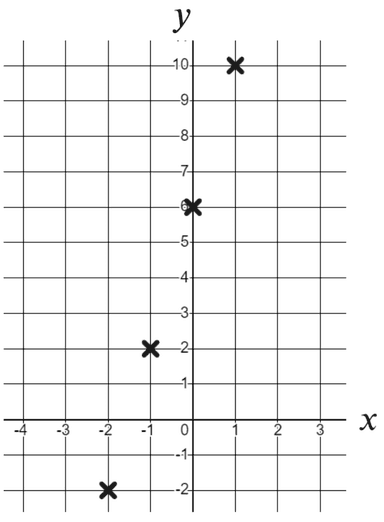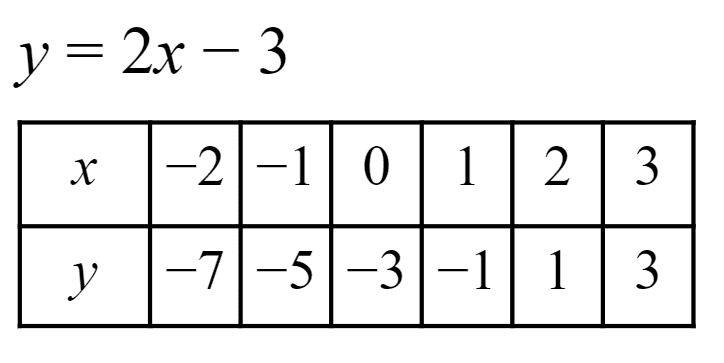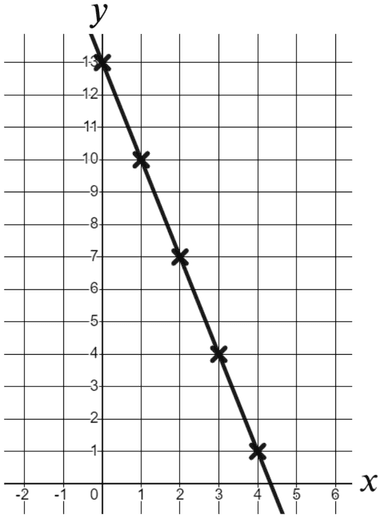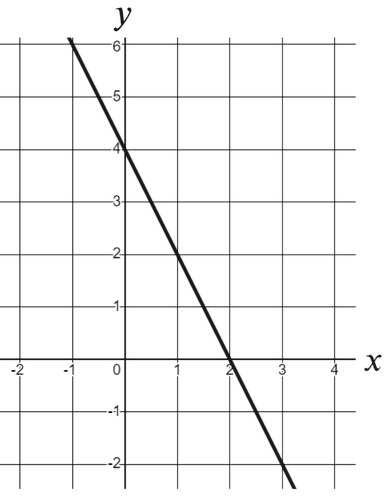Myths about teaching can hold you back


- Year 8
Defining features of linear relationships
I can appreciate that there are two key elements to any linear relationship: rate of change and intercept point.


- Year 8
Defining features of linear relationships
I can appreciate that there are two key elements to any linear relationship: rate of change and intercept point.
These resources were made for remote use during the pandemic, not classroom teaching.
Switch to our new teaching resources now - designed by teachers and leading subject experts, and tested in classrooms.
Lesson details
Key learning points
- There is always a common difference in an arithmetic sequence.
- There is always a constant rate of change on a linear graph.
- There is always an initial value in an arithmetic sequence.
- There is always an intercept point with the y-axis on a linear graph.
- These two features uniquely describe any linear relationship.
Keywords
Rate of change - The rate of change is how quickly one variable changes with respect to another. If constant, there is a linear relationship.
Intercept - An intercept is the coordinate where a line or curve meets a given axis.
Common misconception
The arithmetic sequence 5n+2 starts at 7 so the linear equation y=5x+2 'starts' somewhere.
y=5x+2 has no start and no end; it goes on infinitely. However, all linear equations have a y-intercept and this helps define them.
To help you plan your year 8 maths lesson on: Defining features of linear relationships, download all teaching resources for free and adapt to suit your pupils' needs...
To help you plan your year 8 maths lesson on: Defining features of linear relationships, download all teaching resources for free and adapt to suit your pupils' needs.
The starter quiz will activate and check your pupils' prior knowledge, with versions available both with and without answers in PDF format.
We use learning cycles to break down learning into key concepts or ideas linked to the learning outcome. Each learning cycle features explanations with checks for understanding and practice tasks with feedback. All of this is found in our slide decks, ready for you to download and edit. The practice tasks are also available as printable worksheets and some lessons have additional materials with extra material you might need for teaching the lesson.
The assessment exit quiz will test your pupils' understanding of the key learning points.
Our video is a tool for planning, showing how other teachers might teach the lesson, offering helpful tips, modelled explanations and inspiration for your own delivery in the classroom. Plus, you can set it as homework or revision for pupils and keep their learning on track by sharing an online pupil version of this lesson.
Explore more key stage 3 maths lessons from the Graphical representations of linear equations unit, dive into the full secondary maths curriculum, or learn more about lesson planning.

Licence
Prior knowledge starter quiz
6 Questions
Q1.Two variables that change together at a constant rate when plotted on a graph will form a relationship.
Q2.Match the arithmetic sequences to the descriptors.
$$11,4,-3,-10, ...$$ -
Starts at $$11$$ and decreases by $$7$$.
$$11,7,3,-1, ...$$ -
Starts at $$11$$ and decreases by $$4$$.
$$7,11,15,19, ...$$ -
Starts at $$7$$ and increases by $$4$$.
$$7,18,29,40, ...$$ -
Starts at $$7$$ and increases by $$11$$.
$$11,15,19,23, ...$$ -
Starts at $$11$$ and increases by $$4$$.
$$7,3,-1,-5, ...$$ -
Starts at $$7$$ and decreases by $$4$$.
Q3.Match the common differences to the arithmetic sequences.
$$-8,-3,2,7, ...$$ -
$$+5$$
$$7,2,-3,-8, ...$$ -
$$-5$$
$$-8,-6,-4,-2, ...$$ -
$$+2$$
$$-4,-6,-8,-10, ...$$ -
$$-2$$
$$4,1,-2,-5, ...$$ -
$$-3$$
$$-14,-11,-8,-5, ...$$ -
$$+3$$
Q4.Which of the below coordinates can you see plotted here?

Q5.Here is an arithmetic (linear) sequence for which we are given the second and fourth terms. Which of the below are the missing terms?

Q6.For the linear relationship $$y=15-7x$$ what is the $$y$$ coordinate when the $$x$$ coordinate is $$1.5$$? State your answer as a decimal.
Assessment exit quiz
6 Questions
Q1.The is how quickly one variable changes with respect to another. If the change is constant, there is a linear relationship between the variables.
Q2.Here is a table of values for the relationship $$y=2x-3$$. Which statements are true of the rate of change between the two variables?

Q3.What constant rate of change is shown by this linear graph?

Q4.An is the coordinate where a line or curve meets a given axis.
Q5.What is the $$y$$-intercept of this line?

Q6.Which unique statement describes this line?


